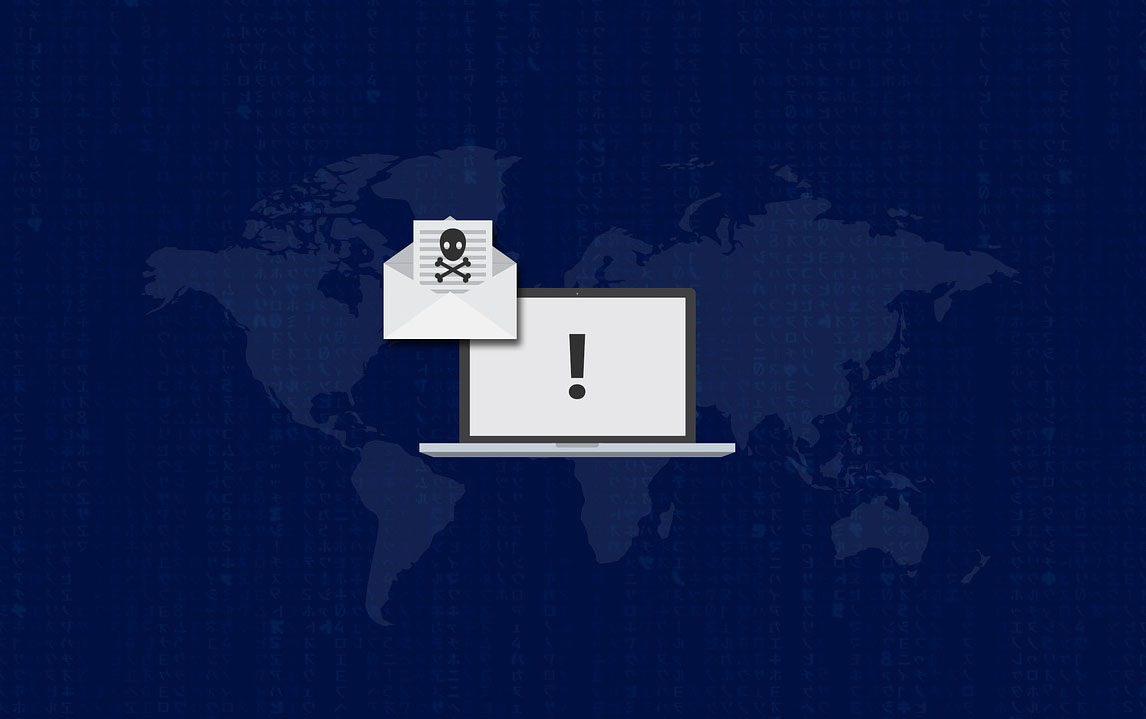Insurtech: Can It Help Claims Experience?
Finding the balance between efficiency and the human touch in the claim process will separate tomorrow’s leading brands from their competitors.

Finding the balance between efficiency and the human touch in the claim process will separate tomorrow’s leading brands from their competitors.

Get Involved
Our authors are what set Insurance Thought Leadership apart.
|
Partner with us
We’d love to talk to you about how we can improve your marketing ROI.
|

Stephen Applebaum, managing partner, Insurance Solutions Group, is a subject matter expert and thought leader providing consulting, advisory, research and strategic M&A services to participants across the entire North American property/casualty insurance ecosystem.
The idea of a unified, all-risks coverage for an individual has long been theorized. Is technology finally making these bundles possible?

The concept of microinsurance has been around for a long time, and the activity in that area is now increasing rapidly, especially due to the InsurTech movement. Pervasive mobile and digital capabilities along with cloud computing have made it much easier to insure a wide range of individual events, activities, or things for a short period. On the other end of the spectrum, the idea of a unified, all-risks coverage for an individual has long been theorized, but underwriting a person for auto, home, liability, life, disability, and other risks in one bundle has not yet been practical.
I’m going to call this one-policy-covers-all-risk approach macro-insurance. Now that technology is advancing so rapidly, and customer expectations for innovative solutions are high, could macro-insurance become a reality? Will we face a time in the future when customers must choose between the micro or macro approaches for insurance coverage?
See also: Big New Role for Microinsurance
This might seem like an academic question, but there is at least one new entity that plans to offer a type of macro-insurance. An InsurTech called Sherpa promises to provide customers coverage across all insurance sectors using a single underwriting process and capitalizing on a direct business model (no agents or commissions). The company claims to have a process that uses new data sources, artificial intelligence, and deep analytics. This could be dismissed as another hare-brained idea from people that do not really understand insurance. However, Sherpa is collaborating with Gen RE and Guy Carpenter, which adds instant credibility to the venture.
Whether Sherpa will be successful remains to be seen, but it might be worthwhile to explore the opportunities and challenges related macro-insurance to get a glimpse into how these developments might affect the insurance industry from different perspectives.
Customer: From a customer perspective, the idea of an all-risks policy with no agent commission seems quite appealing. Who wouldn’t want to go through an underwriting process once and have coverage for all the typical risks a person (or business) is likely to face? However, some people might have an issue with “putting all of one’s eggs in the same basket.” That could be a deterrent to the macro approach for some customers.
Agent: At least in the Sherpa example, there are no agents. So this is a non-starter for distribution partners. However, other models may arise that offer macro-coverage and rely on the advice and council from either a fee-based or commissioned agent.
Actuary: Yikes, where to start! The macro approach is an actuary’s nightmare. There are two possible approaches. First, it may be that a team of actuaries works together to contribute in their areas of expertise to design new products. The second possibility is that actuarial is completely revolutionized, with AI and advanced analytics playing a key role, using a blend of traditional and new data elements. In either case, pricing precision will likely take some time to evolve.
Underwriter: Underwriting the person is a different approach and will require some blend of human expertise in different fields with new data and advanced technologies. Any way you look at it, underwriting becomes a completely new game in the macro-insurance world.
We could continue to explore other roles and other implications of these approaches, especially the complex regulation angle. But these initial discussions provide a preview into the kinds of issues that the industry needs to tackle. At this stage, micro-insurance is off and running, with companies like Trov, Slice, and LenderBot making strides. Macro-insurance is in its infancy and may take a long time to develop, but the concept is intriguing, and it appears that the industry is willing to begin to explore the potential.
See also: 5 Innovations in Microinsurance
So, what’s gonna happen? The most likely scenario is that traditional insurance lines of business will remain for a long time, supplemented by rapid growth in micro-insurance that often extends into new coverage areas, while macro-insurance begins a period of discovery and slow evolution.
Get Involved
Our authors are what set Insurance Thought Leadership apart.
|
Partner with us
We’d love to talk to you about how we can improve your marketing ROI.
|

Mark Breading is a partner at Strategy Meets Action, a Resource Pro company that helps insurers develop and validate their IT strategies and plans, better understand how their investments measure up in today's highly competitive environment and gain clarity on solution options and vendor selection.
Tensions between P&C executives and broker partners have been a hot topic on earnings calls recently; here is how to do better.

Get Involved
Our authors are what set Insurance Thought Leadership apart.
|
Partner with us
We’d love to talk to you about how we can improve your marketing ROI.
|

Keith Boyer is a managing partner of KMRD Partners, Inc., a Bucks County Property & Casualty agency focused on reducing the cost of risk for organizations with complex risk management requirements. KMRD Partners supports a unique mix of higher hazard clients, both public and private, that have national and international exposure. They include manufacturers, distribution companies, contractors, health care and not-for-profit organizations, financial services firms and professional service firms.
Technology can let us recapture some of the simplicity of the fabled picnics on a pleasant spring day in the bluebell-filled woodlands.

Get Involved
Our authors are what set Insurance Thought Leadership apart.
|
Partner with us
We’d love to talk to you about how we can improve your marketing ROI.
|

Denise Garth is senior vice president, strategic marketing, responsible for leading marketing, industry relations and innovation in support of Majesco's client-centric strategy.
The ability to deliver low cost and high quality is rooted in a relentless drive to rethink and execute pragmatic approaches.

Get Involved
Our authors are what set Insurance Thought Leadership apart.
|
Partner with us
We’d love to talk to you about how we can improve your marketing ROI.
|

Brian Klepper is principal of Healthcare Performance, principal of Worksite Health Advisors and a nationally prominent healthcare analyst and commentator. He is a former CEO of the National Business Coalition on Health (NBCH), an association representing about 5,000 employers and unions and some 35 million people.
Telematics technology can, among many other things, generate the first notice of loss from the actual impact dynamics.

Get Involved
Our authors are what set Insurance Thought Leadership apart.
|
Partner with us
We’d love to talk to you about how we can improve your marketing ROI.
|

Karen Pauli is a former principal at SMA. She has comprehensive knowledge about how technology can drive improved results, innovation and transformation. She has worked with insurers and technology providers to reimagine processes and procedures to change business outcomes and support evolving business models.
This month's Six Startups to Watch will highlight the most interesting newcomers among the more than 1,000 startups we track.

We've had so many insurtechs fill out Market Maturity Reviews, providing detailed insights about themselves at our Innovator's Edge site, that this month's Six Startups to Watch will highlight the most interesting newcomers among the more than 1,000 startups we track. Here they are:
—Understory. The company is setting up networks of inexpensive weather stations in cities to provide information to insurers about what is actually happening on the ground, rather than what satellite images suggest is happening. (I saw the value of this last October, when my wife had to pull off to the side of the road in an early winter storm in Truckee, CA. She called to ask about the progress of the storm, and I assured her that satellite images showed it was raining in Truckee and only snowing nearer to Lake Tahoe. She promptly sent me photos showing two feet of snow on the ground and a near whiteout in "rainy" Truckee. For once in our marriage, I learned I was wrong....) The company set up its first network in Kansas City and recently expanded to Dallas, Fort Worth, Houston, Denver and St. Louis. Each network consists of 50 to 150 sensor-filled stations spread around a metropolitan area at schools, churches and other sites where Understory rents space. Insurers get immediate information on, say, a hail storm and can contact customers immediately afterward if they are likely to have damage—pleasing customers, who are unaccustomed to having an insurer look out for them, while repairing damage before it can get worse.
—Wellthie. This insurtech began by sorting through the complexity that is Obamacare, making it easier for insurers to show how their offerings fit within the new structure and for brokers and their clients to find the best coverage. Wellthie now addresses health insurance more broadly, focusing on packages for small business.
—Edgepoint Digital. Based in Tanzania, this company provides health insurance for as little as $1 a month. That is not a typo—a dollar sign followed by a 1, followed by no zeroes. The coverage, aimed at families that earn some $70 a month, requires extraordinary efficiency in processing, based on the M-pesa mobile money transfer system that has taken hold in Africa. Edgepoint, whose offering is called Jamii, has received backing from the Gates Foundation, among many others. Edgepoint is worth a look both for the social good it could accomplish and for what it may show about a concept called "reverse innovation," or "trickle-up innovation." The idea is that not every idea has to begin in the developed world and migrate to the developing world. In fact, when it comes to cost-effective solutions, ideas can begin in the developing world—you may be more likely to find radical innovation if you start by thinking about families earning $70 a month than if you start with those earning the U.S. median of $52,000. Reverse innovation has already happened with refrigerators, medical equipment and other products. Maybe insurance is next.
—ElevateBenefits. It seems that comparison sites don't need to limit themselves to products and prices. This startup provides a way to compare brokers, too, for employee benefits, through its brokerSpotlight tool. Competition is everywhere these days.
—Instanda. The product development cycle in insurance has historically been measured in months, not weeks, and certainly not days. But the pace of innovation in an industry depends on cycle time for product development—how quickly a product can be generated, tested and revised or tossed aside. Regulation will always limit speed in insurance, as it should, but product development can move far faster than it does now, and Instanda provides a tool that can greatly speed the process.
—Bold Penguin. The portal allows the insurance agent and carrier to streamline the quoting, binding and servicing elements of policies, an area of major friction for not only them but also for clients. The company—which teamed up in April with Ask Kodiak, which has a tool that matches clients with carriers interested in their sort of risk—aims to move placing commercial insurance to digital, paperless processes.
Cheers,
Paul Carroll,
Editor-in-Chief
Get Involved
Our authors are what set Insurance Thought Leadership apart.
|
Partner with us
We’d love to talk to you about how we can improve your marketing ROI.
|

Paul Carroll is the editor-in-chief of Insurance Thought Leadership.
He is also co-author of A Brief History of a Perfect Future: Inventing the Future We Can Proudly Leave Our Kids by 2050 and Billion Dollar Lessons: What You Can Learn From the Most Inexcusable Business Failures of the Last 25 Years and the author of a best-seller on IBM, published in 1993.
Carroll spent 17 years at the Wall Street Journal as an editor and reporter; he was nominated twice for the Pulitzer Prize. He later was a finalist for a National Magazine Award.
Here are five ways to prepare in the face of an enormous uptick in increasingly severe ransomware attacks, such as the recent WannaCry.

Get Involved
Our authors are what set Insurance Thought Leadership apart.
|
Partner with us
We’d love to talk to you about how we can improve your marketing ROI.
|

Roberta Anderson is a director at Cohen & Grigsby. She was previously a partner in the Pittsburgh office of K&L Gates. She concentrates her practice in the areas of insurance coverage litigation and counseling and emerging cybersecurity and data privacy-related issues.
The agent of the future is looking for innovative, customized products to meet changing market and customer demands.

The direct channel has a major impact on the distribution landscape, as customers become the focal point for every transaction and sale. More agents consider the market shift toward online or direct sales a major constraint in the growth of their business. EY recently surveyed 530 P&C and life insurance agents to better understand trends, growth strategies and ways in which engagement rules have changed. They were asked about carrier selection, support and perceived value, as well as future growth engines and how they see their role as agents evolving in three to five years.
Four key themes emerged from this survey.
1. The threat of direct-to-consumer and digital business models is driving insurance agents’ desire to use digital and social sales tools.
Agents are concerned with how they fit into the trend of more direct-to-consumer and online insurance models. Most view the market shift to direct-to-consumer and online channels as the major constraint in the growth of their business going forward. Inadequate products, investment in analytics, administration and automation, and speed and quality of access to customer or policy data also are constraining growth.
Agent perceptions of carriers
While carriers begin to explore alternative distribution platforms, agents still believe they add value and want to be actively engaged with the customer. Survey findings reveal that agents who sell commercial insurance understand the most about how they fit into their carrier’s strategy, while those who sell personal lines and life insurance understand the least.
Growth is a major concern
The landscape of consumers is rapidly evolving from “traditionalists” to “technologists.” Millennials are the largest customer group in history -- and a target growth area for most industries, including insurance. Agents indicated that they need different tools and products to meet their needs and to capture this growth. Agents currently value basic functionality (e.g., operations and sales); however, the agent of the future will be concerned more with digital capabilities and tools. Quality of tools plays a large factor in the decision-making process.
See also: How to Support the Agent of the Future
2. Agents expect carriers to enable simple customer and agent experiences, which, in turn, will drive agent loyalty.
Today, 90% of agents tap into multiple carriers, which is forcing insurance providers to rethink their value proposition and ability to differentiate. Personal P&C agents are more likely to have two to five most-favored carriers, while those in commercial lines tend to favor one or two carriers for each product. Only 12% have one primary alliance carrier.
Agents need support from carriers
When asked what carriers could do to ease the operational burden on an agency, respondents universally identified better communication, improved customer service and underwriting. Agents think simplicity is the key for carriers to improve the customer experience. Across product types, agents have different opinions of what carriers can do to improve their responsiveness to customer service or claims; 45% want fewer forms and less paperwork, while 35% propose simpler products and better customer online tools.
Better sales tools, technology and analytics
Life agents are more focused on systems that support new leads and better underwriting, representing an opportunity for improvement. While 65% of commercial and P&C agents rate current tools as very good or good, only 45% of life agents rank them as such. The larger the agency, the higher the quality rating.
3. The agent of the future is looking for innovative, customized products to meet changing market and customer demands.
Innovation will require product change
Product innovation will be a key driving factor behind the agent of the future’s expanded basket of products. All agents place significant value on innovation that facilitates new business. Nearly half of commercial agents perceive technology that automatically identifies potential opportunities within their existing book of business as highly important. The majority of agents believe that carriers could be more innovative by producing more simplified products that require less explanation and better address the needs of millennials. Only one third view the needs of Gen-X’ers and baby boomers as the type of product innovation that will help them grow their business.
Wearables and new technology present opportunities
Technology is viewed as an important factor in addressing the needs of a new generation of agents – and adding millennials to the salesforce will better cater to that market. As millennials continue to represent more market share, almost 40% of agents question their preparedness to meet the needs of the next generation.
4. Agents see close collaboration with carriers as driving growth.
Agents want to be more involved in the underwriting process. They agree that carriers could improve underwriting interaction by allowing more access to underwriters, enabling agents to work with the same underwriters and shifting underwriters’ transactional role to a relationship-focused engineer of customer solutions.
Agents seek closer working relationships with carriers
The majority of agents are open to the idea of reducing their role in servicing to focus on sales and growth. Across all product types, nearly half of agents view increased customization as one of the main product changes to address future needs. In line with customization, 40% of agents view the ability to provide many available features to address a wide set of needs as key to meeting evolving market demand.
Improving the agent experience
Strengthening current customer relationships and achieving customer-centricity in core operations have become strategic imperatives. As consumers embrace digital and other emerging technologies, insurers must rethink their distribution strategies, agency interactions and partner relationships.
See also: The New Agent-Customer Relationship
Conclusion
Listening to the “voice of the agent” can help carriers provide a deeper, more robust experience and support them to rethink their commitment to the agency system. A collaborative process will allow carriers and agents to interact and strengthen their relationship. Our survey supports the concept that insurers and the agent of the future will be stronger by working together.
Get Involved
Our authors are what set Insurance Thought Leadership apart.
|
Partner with us
We’d love to talk to you about how we can improve your marketing ROI.
|
Insurers can create better policies, identify their lowest-risk policyholders and obtain alerts when policyholders are at risk.

Get Involved
Our authors are what set Insurance Thought Leadership apart.
|
Partner with us
We’d love to talk to you about how we can improve your marketing ROI.
|

Robin Roberson is the managing director of North America for Claim Central, a pioneer in claims fulfillment technology with an open two-sided ecosystem. As previous CEO and co-founder of WeGoLook, she grew the business to over 45,000 global independent contractors.